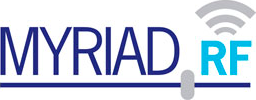I’ve had a break through on the LimeSDR sensitivity on 6M through 432.
The key is to turn down the internal Lime LNA and use an external LNA for the band you’re on. Also, pay no attention to the frequency markings on the antenna ports. Try all three and use the best.
I’ve been using a GVA-63 for testing as I had one here all made up for another project (5760 driver). Not a very good NF.
On 6M, I started out at -115 as the reference for MDS using the LNA_L port. I changed to the LNA_W port and went down to -123. I then inserted the GVA-63 which only has 7 dB gain and went to -128. This is with the internal Lime LNA set at -15. Any higher and it’s just noise. I bet a higher gain LNA will lower the MDS further.
I saw -128 to -141 on 2M. On 222, picked up 7 dB and on 432 10 dB. 222 and 432 weren’t too bad to start.
I plan to try some PGA-103’s which have a much better noise figure.
Looking up!!
Mike
